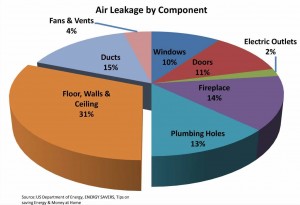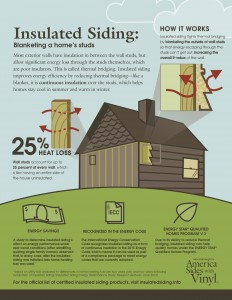INSULATED SIDING
Installing insulated siding can have a big impact on the energy-efficiency of your home. An insulated siding system is made up of a few components such as the vinyl siding with foam insulation, insulated underlayment, and a moisture barrier. The installed insulated siding system will combat air infiltration and loss, and add improved R-values of up to 4 to the exterior walls.
Air loss/infiltration accounts for the largest category of heat loss/gain in your home. When examining the lost energy of a home many look to drafty windows and doors as the main culprit- but the most benefit might be found in insulating the exterior walls of your home. Recent studies from the Department of Energy show that approximately 31% of air loss and infiltration comes from floors, walls, and ceilings.
A few factors need to be considered to evaluate the insulating properties of your exterior walls, but it’s estimated that homes built before 1970 have an average R-value of 4 while homes built after 1970 are estimated to have an R-value of about 7.5. Coupled with the aforementioned air infiltration and loss, adding insulated siding with a breathable water barrier will tighten up the cracks and seams where air is invading and escaping, and add up to 1/3 additional R-value on the exterior walls.
A recent study preformed by the Washington, D.C. based Vinyl Siding Institute concluded that in all observed instances where insulated siding had been installed with an effective moisture barrier- homes showed improved air infiltration, permeability, and added r-value.




